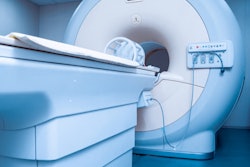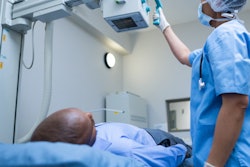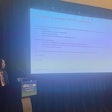
A process for managing follow-up imaging exams that combines artificial intelligence (AI) and human interaction can improve safety while also improving the bottom line, according to research published in Current Problems in Diagnostic Radiology.
A team led by Bradley Roth from the University of California, Irvine found that revenue for follow-up exams was more than staff costs when the quality nurse contacted healthcare providers to place orders after being alerted by the AI system.
"Given the potential patient safety and medicolegal liability of potential missed follow-ups, a net profit from this system may be financially sound," Roth and colleagues wrote.
Although radiology reports may have recommendations for follow-up imaging, compliance with these recommendations may be skipped or delayed. Previous studies have explored how AI can potentially help mitigate this issue, according to the researchers.
Their institution employs a hybrid detection and communication system that includes mPower (Nuance Communications), a software application that uses a natural language processing algorithm for tagging exams. A quality nurse then coordinates follow-up care with referring providers and/or patients.
For their study, the researchers wanted to analyze the net revenue gained from imaging exams indicated by follow-up recommendations. They included data from 427 patients, for whom the quality nurse contacted their healthcare providers to place orders. While the team included several imaging modalities in its study, the most common follow-up exams included dual-energy x-ray absorptiometry (DEXA, n = 109), thyroid ultrasound (n = 88), and chest CT without contrast (n = 61).
To conduct their revenue analysis, the researchers used a national annual salary of $43,878 for quality and patient safety nurses. They also used a median salary of $75,330 for a registered nurse in 2020. Additionally, they noted that the institution's own quality nurse "estimates that she spends about 60% of her daily schedule on follow-up recommendations utilizing the mPower system."
Using this information, the team calculated a median of $45,198 ($75,330 x 0.6 full-time equivalents). It also accounted for an extra quarter-year calculated in the institution's revenue, meaning the personnel cost was $56,497.50.
The researchers found that the hybrid human-AI system was profitable, with revenue from follow-up exams from the 427 patients coming to $62,937.66. They wrote that this number was based on Medicare 2020 and Medicare 2021 reimbursement rates. This represents a net profit of $6,440.16.
While the system may result in net losses depending on nurse salaries, the study authors suggested that the system may still be beneficial for "most" healthcare systems. They pointed out that it may improve patient safety and help avoid malpractice suits from potential missed follow-up exams.
"Improved follow-up workflow can have a great impact on patients' lives," the authors wrote. "This demonstrates the need for consistent, financially-sound workflow solutions to improve follow-up."



















